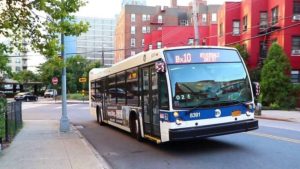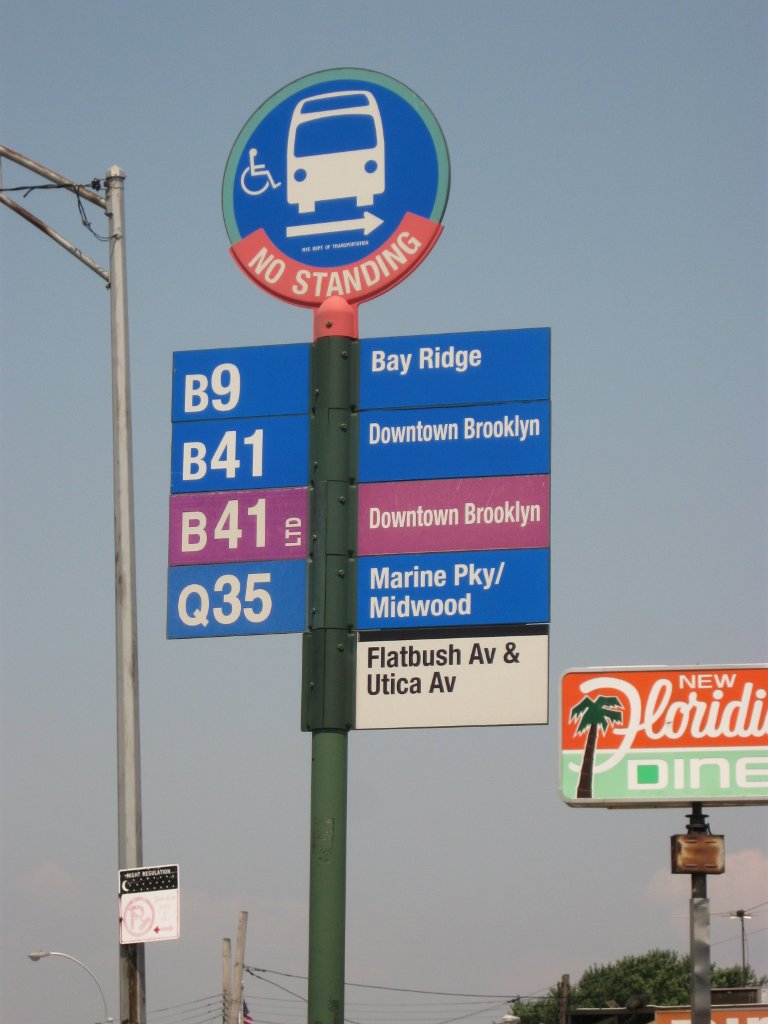
As part of a large transit system with 4,500 buses, 235 routes, and over 16,000 stops, significant needs for service changes emerged on an ongoing basis. We were tasked with achieving the following goals:
- Speeding up bus service. Most local routes have short stops spacing, 500 to 750 feet between stops. The average bus speed was 8 mph, the slowest in the United States.
- The region is an EPA air quality non-attainment region. Emissions from buses were a special focus for emissions reductions programs.
- Many bus routes faced significant overcrowding. Some routes carried between 20,000 and 60,000 daily passengers, difficult to manage with on-board fare payment.
- Service needs varied widely from responding to customer demands for route changes to occasional drops in funding requiring rapid reductions in service.
Based on the above goals, we worked with the transit agency to progressively implement the following initiatives over a period of ten years:
Speeding up bus service
- We implemented the first bus rapid transit line on a major crosstown corridor, including the first use in this region of off-board, proof-of-payment fare collection method.
- We redesigned the route network to overlay new limited-stop bus service on heavily used routes, with bus stop spacing increased from 500-750 feet to more than half-mile.
- We rationalized bus stops in certain corridors (e.g., by increasing stop spacing from two-blocks to three-blocks)
Improving area air quality
We assisted with implementing operational changes resulting from substitution of clean-diesel buses first with liquefied natural gas vehicles then with diesel-electric hybrid buses. Changes made include:
- Identifying garages requiring Capital Program reconstruction to be modified for CNG operation, and certified as safe.
- Identifying candidate routes with low-speed start/stop operation for optimal energy consumption and sufficient overhead clearance for hybrid buses.
We collaborated with garage superintendents and organized labor to implement these changes.
Dealing with high volume bus routes
We collaborated with bus operations to identify candidate routes for conversion to 60’ articulated buses. We carefully selected very high frequency routes (better than 6-minute headways, such that reduced frequency would be imperceptible), and recommended re-siting certain stops to provide more street space for the longer vehicles.
Responding to customer requirements
We worked with the agency in implementing the following initiatives:
- Extension of existing routes, managing both operational and schedule changes, plus working with media teams on public communication;
- Set up the first interstate bus route in the agency’s history;
- Increasing span of service on some routes, starting earlier, ending later, or both;
- Strategic redesign and rationalization of service to minimize customer impacts while achieving required cost reductions
- Rerouting of existing services due to significant changes in the street network, from both pedestrianization initiatives and long-term construction projects
Our work over the course of the period resulted in the following service improvements:
- Travel times on routes converted to bus rapid transit were reduced by up to 20%; significant travel time reductions on new limited-stop routes.
- CNG and hybrid diesel-electric buses significantly contributed towards better urban air quality.
- Overcrowding was significantly reduced on routes converted to 60-foot articulated buses.
- Bus routes with higher speeds or route extensions showed ridership increases above the average for their area.

